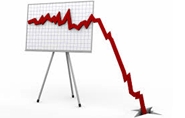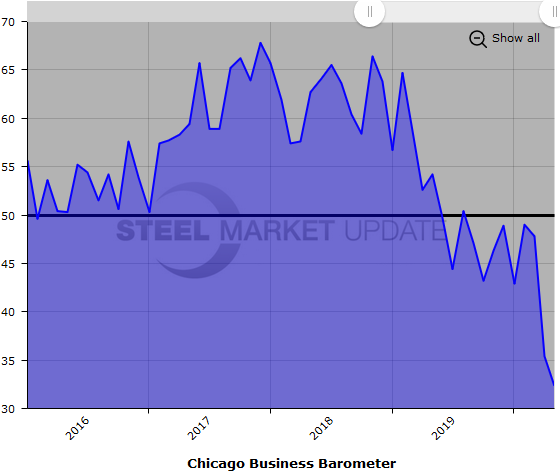Economy

Chicago Business Barometer Sinks Further in May
Written by Sandy Williams
May 29, 2020
The Chicago Business Barometer dropped to 32.3 in May, indicating further pressure on the manufacturing sector due to the COVID-19 crisis. The barometer was at its lowest level since March 1982.
After seeing a dramatic drop in demand during April, new orders fell 2.3 points in May. Production fell 6.3 percent putting the index at a 40-year low due to temporary pandemic shutdowns, said MNI Indicators.
Order backlogs fell 28.0 percent in May to the lowest index level since March 2009 and posted the ninth straight month in contraction.
Inventories were noted as too high in May, while the supplier deliveries index eased downward 4.8 percent following a 46-year high in April.
Employment levels rebounded somewhat from April’s decline, but anecdotal comments pointed to layoffs and/or salary reductions for some firms, while others looked for new hires.
Looking forward, most survey respondents expect COVID-19 to impact business plans for the rest of the year or longer. The breakdown was as follows:
- 10.4 percent – less than 3 months
- 20.8 percent – 3-6 months
- 27.1 percent – 6-9 months
- 22.9 percent – 9-12 months
- 18.8 percent – more than a year
Below is a graph showing the history of the Chicago Business Barometer. You will need to view the graph on our website to use its interactive features; you can do so by clicking here. If you need assistance logging in to or navigating the website, please contact us at info@SteelMarketUpdate.com.


Sandy Williams
Read more from Sandy WilliamsLatest in Economy

ISM: Manufacturing expansion loses steam after two months of growth
US manufacturing activity slowed in March after two straight months of expansion, according to supply executives contributing to the Institute for Supply Management (ISM)’s latest report.

Chicago Business Barometer rose to 16-month high in March
The Chicago Business Barometer increased for the third-consecutive month in March. Despite this, it still reflects contracting business conditions, as it has since December 2023.

Durable goods orders rise again in February
Transportation equipment led the increase, rising 1.5% to $98.3 billion.

Consumer confidence falls for fourth consecutive month
People remain concerned about inflation, trade policies, and tariffs.

Housing starts ticked up in February
Single-family starts last month hit a rate of 1.10 million, a month-over-month increase of 11.4%, census data shows.
